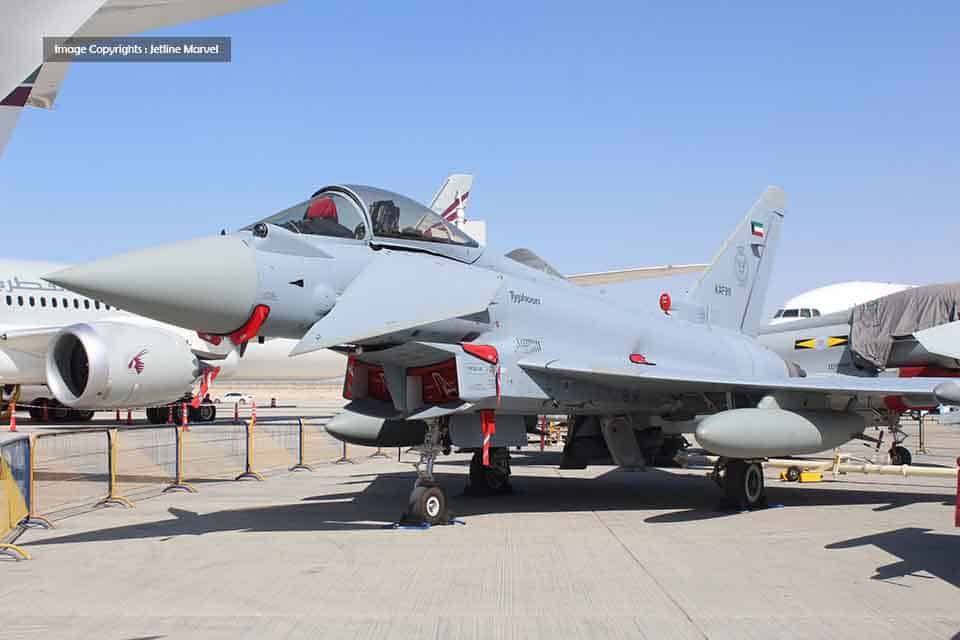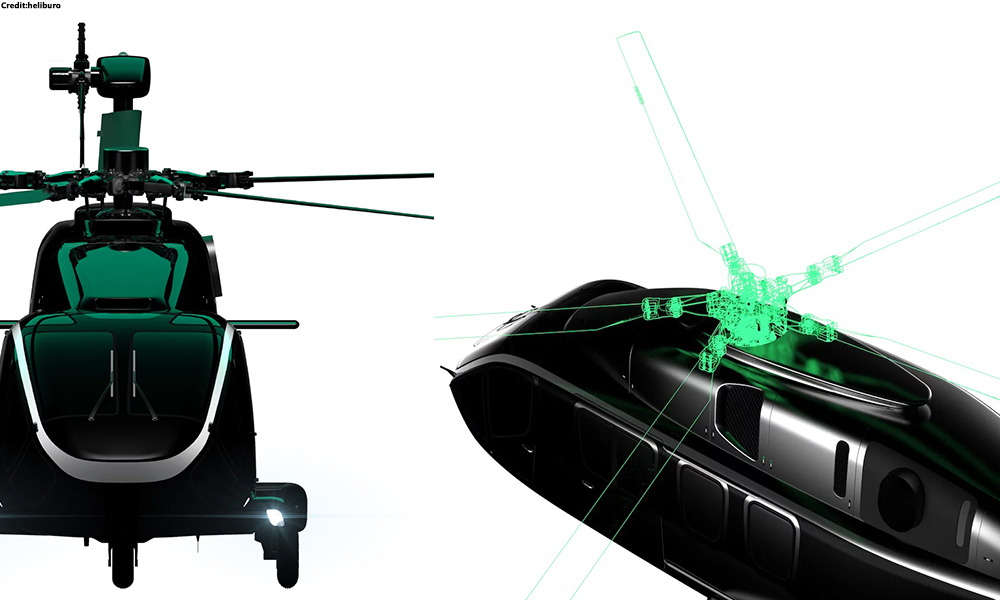Defence
Airbus Joins India’s Fighter Jet Competition with advanced Eurofighter

In a bold move for India’s massive Medium Multi-Role Fighter Aircraft (MRFA) tender, Airbus has unveiled its latest iteration of the Eurofighter Typhoon. With India seeking to acquire 114 jets, Airbus is positioning its Tranche 5 variant of the Eurofighter as a top contender for this prestigious contract.
The Block 5 Eurofighter comes packed with a host of advanced features, headlined by the cutting-edge E-Scan active electronically scanned array (AESA) radar. This radar system offers unparalleled situational awareness and target tracking capabilities, crucial for modern air combat scenarios. Coupled with enhanced defensive aids and a human-machine interface (HMI) optimized for pilot performance, the Eurofighter promises superior combat capability.
The Tranche 5 offering incorporates elements of the Long Term Evolution (LTE) package, showcasing advancements in mission systems, pilot interfaces, operational flexibility, and engine performance. By integrating state-of-the-art hardware and software, Airbus aims to cement the Eurofighter’s status as a leading combat aircraft.
Beyond its technical prowess, the Eurofighter boasts a formidable arsenal of air-to-air missiles, including the AMRAAM, ASRAAM, IRIS-T, and AIM-9L, ensuring versatility in various battlefield scenarios. Furthermore, the aircraft’s capabilities extend to long-range missions, facilitated by certified external fuel tanks for supersonic flights and compatibility with multiple tanker types for air-to-air refueling.
Airbus views this Eurofighter offering as a crucial step in its ongoing development efforts, positioning the aircraft as a cornerstone of Europe’s future air combat plans. With a keen eye on past competitions, Airbus is determined to address previous shortcomings and demonstrate the Eurofighter’s competitiveness not only in terms of capability but also in terms of pricing.

Defence
Russia’s NV.17 Hybrid Helicopter Aims to Balance Light and Heavy Helicopter Needs

As Western sanctions continue to impact Russia’s aviation sector, the country is making significant strides in advancing its domestic aerospace capabilities.
Despite the ongoing challenges, Russia has unveiled the Heliburo HB.17, a cutting-edge hybrid-powered medium-class helicopter that promises to reshape both commercial and military aviation.
The helicopter is currently in the technical design phase, with plans for its first flight slated for 2027. This marks a major step forward in Russia’s efforts to modernize its aviation fleet and reduce reliance on foreign technology.
This country tops visa rejections in the popular Schengen countries
The HB.17 is designed as a versatile, multi-role aircraft, capable of performing a wide range of functions. It is built to handle cargo transport, passenger carriage, reconnaissance, and close air support missions. With its robust design and flexible capabilities, the HB.17 is expected to meet the needs of both military and commercial operators, offering a solution for missions requiring a greater capacity than light helicopters but avoiding the limitations of larger aircraft.
One of the most innovative features of the HB.17 is its hybrid power plant. This combination of conventional and electric technologies enhances fuel efficiency, allowing the helicopter to stay airborne for up to seven hours without needing to refuel.
This extended operational endurance makes the HB.17 particularly well-suited for long-duration missions, providing a significant advantage over traditional helicopters. Additionally, the HB.17 will be equipped with modern avionics, ensuring advanced navigation, communication, and operational capabilities.
Qatar Airways Cargo and MASkargo Launch New Strategic Partnership
The HB.17 is positioned to compete with other medium-class helicopters such as the Kamov Ka-60/62 and the Mil Mi-38. However, its hybrid powerplant and modern avionics set it apart, offering a more efficient and technologically advanced alternative.
Its multi-role versatility, combined with its fuel efficiency and cutting-edge systems, gives it a competitive edge in the evolving aviation landscape. The introduction of the HB.17 follows recent reports of Russia receiving a new batch of armored vehicles from the UAE-based Streit Group.
Russia has traditionally focused on producing helicopters for defense purposes, but this time, it appears to be venturing into the civilian helicopter market with the HB.17.
This, along with the ongoing development of the HB.17, reflects Russia’s continued efforts to modernize its military assets and increase its self-reliance, even as sanctions continue to pressure its defense and aerospace sectors.
As Russia faces mounting geopolitical challenges, the HB.17 stands as a symbol of resilience, technological innovation, and determination to maintain its military and aviation capabilities.
-

 Aviation2 months ago
Aviation2 months agoMicrosoft Flight Simulator Raises $3 Million to Bring Back the An-225 Mriya
-

 Airlines2 months ago
Airlines2 months agoQantas Engineers Stage Walkout Over Cost of Living Concerns
-

 Airlines2 months ago
Airlines2 months agoQatar Citizens Can Travel to the United States Without a Visa
-

 Aviation2 months ago
Aviation2 months agoQatar Airways bans these new Electronic Devices on plane
-

 Airlines2 months ago
Airlines2 months agoJapan Airlines Rolls Out Free Domestic Flights to International Passengers
-

 Defence2 months ago
Defence2 months agoWhich Country Has the Largest Fleet of Fighter Aircraft?
-

 Airport2 months ago
Airport2 months agoWestern Sydney Airport Welcomes Its First Plane After 6 Years of construction
-

 Travel2 months ago
Travel2 months agoQatar Airways Launches Four Additional Flights from Amsterdam








